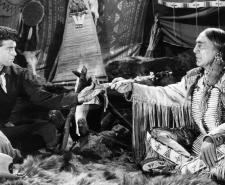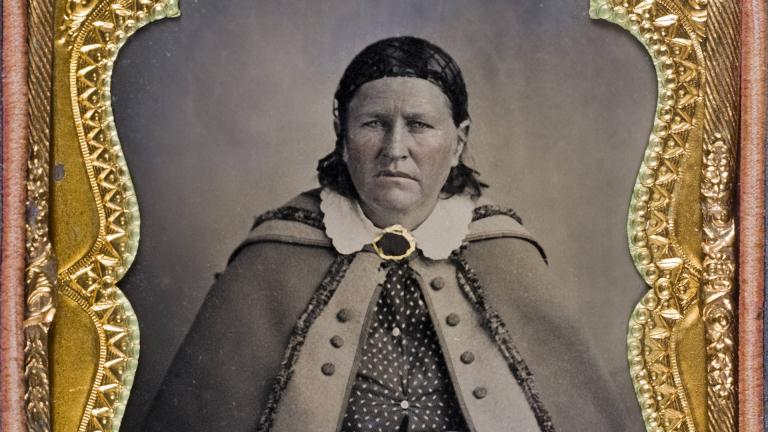
Read more about American History

Think of the Wild West and you likely instantly picture cowboys, sheriffs and outlaws. These masculine images have been imprinted in our minds by classic Western films, but the telling word there is ‘masculine’. Did women roam the Wild West, too?
Doris Kearns Goodwin, executive producer of the new Sky HISTORY docuseries Kevin Costner’s The West, observes: 'It’s as if there were no women that ever went west. Well, obviously they went with their guys and they formed the communities.'
Doris adds: 'When they went, they made a difference.' As the 19th-century United States strove to bring order to the ‘lawless’ west, female settlers enjoyed unprecedented flexibility. Their stories enthrall us here at Sky HISTORY.
Hollywood legend Kevin Costner remarks: 'You hear the term "Wild West" and it’s kind of a cliché, right? But it’s not. The West was wilder than wild. It was dangerous.'
He notes that 'it was a daily moment to be able to survive out there.' So, frontierswomen — like their male counterparts — had to adapt to thrive. Native Americans already inhabiting the land were often perceived (not always correctly) as a major threat to white settlers’ safety.
Doris points out: 'Cynthia Ann Parker is abducted by a Native American tribe when she’s young. She ends up living with that tribe, marrying the chief, having three children and wanting to stay there — but they come and take her back.'
Parker features in episode four of the series. While Kevin describes her story as 'incredibly compelling', he concedes that it 'happened hundreds of thousands of times. She was not the only captive that had that experience.'
Much like Parker attempted to flee back to her Comanche family after her ‘rescue', many other Western women rebelled against societal norms of the time. Here are just some of those tenacious ladies.
Why have the exploits of many Wild West women seemingly been erased from history? One possible reason is their aptitude for blending in.
Many contemporaries appear to have tolerated women closely emulating men’s clothing choices, shooting and even drinking. Martha Jane Canary was just one woman to routinely deliver a masterclass on all three fronts.
It’s not entirely clear where Canary’s now-famous nickname ‘Calamity Jane’ came from, but one theory is that men genuinely courted calamity if they offended her. It was certainly a usefully showbizzy moniker to have when she toured with Buffalo Bill’s Wild West Show.
The story goes that Annie Oakley catapulted to fame after narrowly beating skilled marksman Frank E Butler in a shooting contest. Butler later became romantically involved with Oakley, and the pair married in 1882.
Later still, Oakley’s sharpshooting prowess earned her a starring role in Buffalo Bill’s Wild West Show. By the time of her passing in 1926, Oakley had also reportedly taught over 15,000 women how to use a gun for self-defence purposes.
Narcissa Prentiss was born in Prattsburg, New York on 14th March 1808 and, as a young woman, sought to become a missionary. To ensure she would be eligible to undertake missionary service in Oregon Country, she married a doctor and fellow aspiring missionary, Marcus Whitman, in 1836.
After establishing their mission site in the area, the Whitmans endeavoured to convert resident Native Americans to Christianity. However, these efforts made very little headway.
Tensions between the Whitmans and the Cayuse people worsened after a measles outbreak ravaged the Oregon population in 1847. A group of angry natives, believing Dr Whitman had failed in his duty to sufficiently tackle the epidemic, killed the Whitmans later that year.
There’s also a misconception about the presence of black people in the Wild West. Did you know that, in 1875, a quarter of American cowboys were black? Right now, though, we turn our attention to a black woman — Mary Fields, or as she was widely nicknamed, 'Stagecoach Mary'.
Though born a slave, Fields was a free woman after the American Civil War came to a close in 1865. Fields was in her sixties when, in 1895, she became the first black woman to work as a star-route mail carrier in the United States.
She remained in the job for eight years, usually transporting the mail in a stagecoach (hence her nickname!).
The Old West certainly wasn’t the only period where determined women broke the mould. To find out more, subscribe to the Sky HISTORY Newsletter.